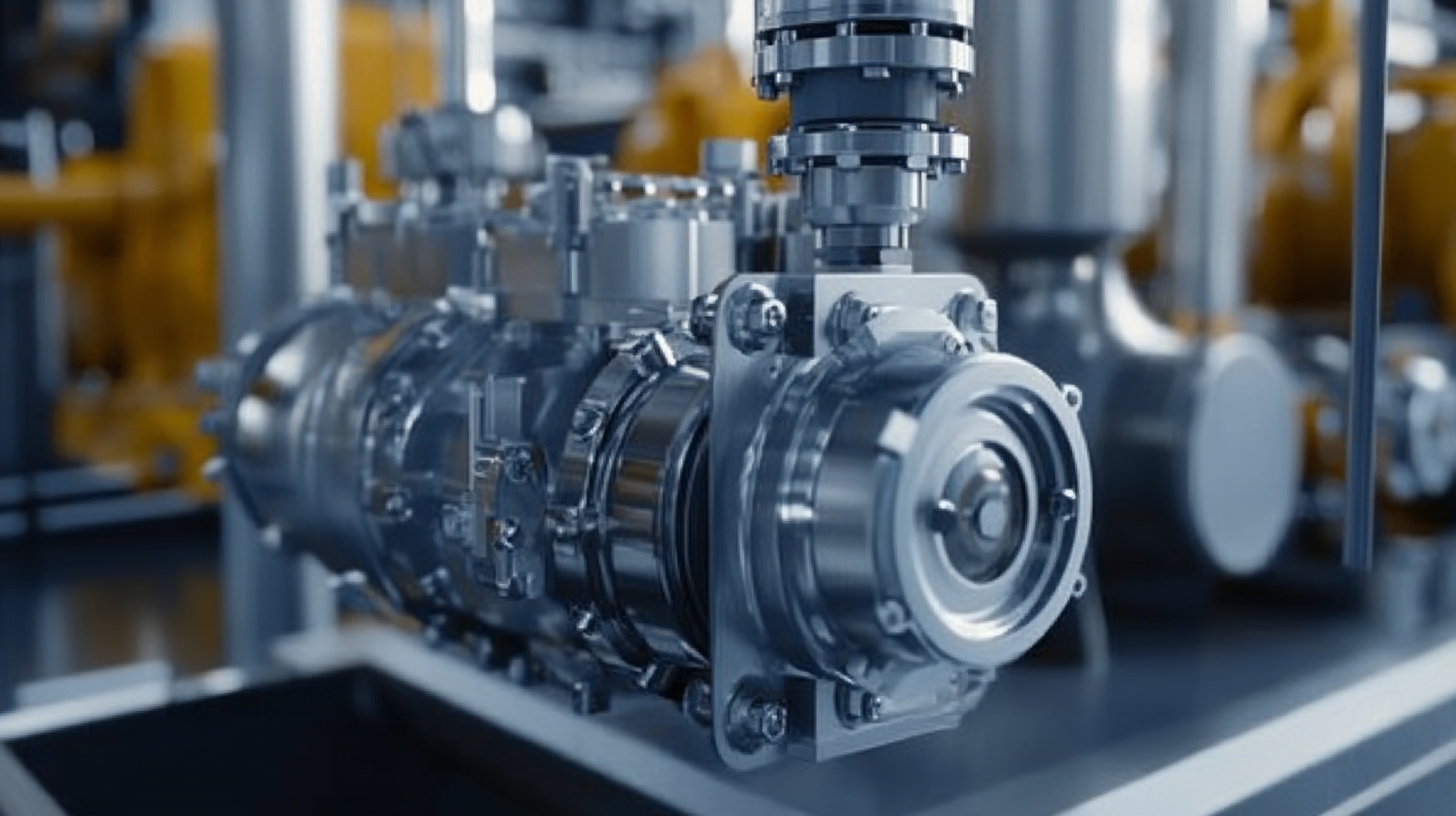Unlocking Efficiency in Agriculture with Advanced Tractor Hydraulic Pump Technology Insights
In the rapidly evolving landscape of agriculture, implementing advanced technologies has become paramount for enhancing efficiency and productivity. One such technological innovation that has significantly transformed farming practices is the Tractor Hydraulic Pump. These pumps are critical components of tractors, enabling them to perform various tasks, from lifting heavy implements to facilitating precise control over attachments. Understanding the capabilities and advancements in Tractor Hydraulic Pump technology can provide farmers with a strategic advantage in their operations.
As the demand for higher yields and sustainable practices continues to grow, the role of Tractor Hydraulic Pumps in modern agriculture cannot be overstated. They contribute not only to the overall efficiency of machinery but also to the seamless execution of essential agricultural tasks. In this blog, we will explore the latest insights into Tractor Hydraulic Pump technology, examining how these advancements can unlock new levels of efficiency and effectiveness in farming, ultimately leading to a more productive agricultural sector.

The Role of Hydraulic Pumps in Modern Agricultural Machinery
Hydraulic pumps play a crucial role in modern agricultural machinery, facilitating the efficient operation of various systems that farmers depend on. With the agricultural sector increasingly embracing advanced technology, hydraulic systems are at the forefront of this transformation, enabling enhanced performance and productivity. According to recent market analysis reports, the hydraulic gear pumps sector is poised for significant growth, driven by rising activity in agriculture and other key industries. This trend underscores the increasing reliance on hydraulic systems in agricultural applications, where efficiency is key.
The innovations in hydraulic technology are exemplified by the introduction of optimized hydraulic systems in new tractor models. For instance, the latest tractors now feature hydraulic configurations specifically designed to deliver more torque and higher flow capacities. These advancements not only improve the machines' operational efficiency but also contribute to reduced downtime, allowing farmers to maximize their output during critical planting and harvesting seasons.
In addition, the integration of electrification and autonomous solutions into hydraulic systems marks a pivotal shift in agricultural machinery design. New hydraulic components showcased at industry events highlight the commitment to developing systems that not only improve performance but also align with sustainability efforts. As farmers seek to modernize their operations, the importance of efficient hydraulic pumps will continue to grow, solidifying their status as an essential component in the modern agricultural landscape.

Innovative Technologies Enhancing Hydraulic Pump Performance
The realm of agriculture is witnessing a transformation fueled by innovative technologies that enhance hydraulic pump performance in tractors. These advancements are not merely incremental; they represent a leap towards unlocking greater efficiency and productivity on the farm. Hydraulic pumps are crucial for a tractor’s operation, powering essential implements like plows, seeders, and sprayers. With the integration of cutting-edge technology, these hydraulic systems are becoming more responsive and reliable, ultimately driving down operational costs and increasing output.
One of the most significant advancements comes from the development of variable displacement pumps, which adjust output flow based on demand. This adaptability minimizes energy waste, allowing farmers to use less fuel while still achieving optimal performance. Moreover, enhanced materials and manufacturing techniques have led to pumps that are more durable and resistant to wear and tear, significantly reducing maintenance time and costs. Additionally, the integration of smart sensors in hydraulic systems allows for real-time monitoring, ensuring that farmers can optimize their operations and prevent potential failures before they occur.
In essence, these innovative technologies are not just about increasing the power of hydraulic pumps but are also about making them smarter and more efficient. By embracing these advancements, farmers can boost their productivity and sustainability, paving the way for a more resilient agricultural sector. As technology continues to evolve, the future of agricultural equipment looks increasingly promising, making it an exciting time for farmers and industry leaders alike.

Benefits of Advanced Hydraulic Pumps for Farm Efficiency
Advancements in hydraulic pump technology are revolutionizing the efficiency of agricultural practices. The integration of sophisticated hydraulic systems, such as those seen in recent collaborations between companies like HydraForce and SaMASZ, is enabling tractors to operate more effectively under various conditions. By redesigning hydraulic and electronic control systems for implements like tractor-mounted disc mowers, improvements in responsiveness and power management have been achieved, ultimately allowing farmers to maximize productivity while minimizing energy waste.
Moreover, manufacturers like Case IH are pushing the boundaries of agricultural machinery efficiency with their new 2025 Farmall C models. These tractors feature a 24-speed ActiveDrive 2 transmission, which enhances operational flexibility and efficiency. This evolution in design not only optimizes fuel consumption but also aligns with industry statistics indicating that modern hydraulic systems can improve power-to-weight ratios by up to 30%, significantly benefiting farm operations.
In addition, the introduction of electromechanical cylinders, as demonstrated by RISE™ Robotics, presents new alternatives to traditional hydraulic systems. These cylinders are noted for their efficiency and reduced maintenance costs, making them attractive in various heavy equipment applications. Transitioning to these advanced systems allows farmers to enhance performance capabilities in tasks ranging from tilling to harvesting, all crucial to maintaining competitive agricultural outputs in today’s demanding market.

Comparative Analysis: Conventional vs. Advanced Hydraulic Systems
In the evolving landscape of agriculture, the choice of hydraulic systems can significantly impact operational efficiency and productivity. This blog delves into a comparative analysis of conventional hydraulic systems versus advanced hydraulic technologies, particularly focusing on tractor hydraulic pump innovations. Conventional systems have served farmers well for decades, typically utilizing simple hydraulic circuits that provide basic functionality. However, these systems often come with limitations in efficiency, responsiveness, and adaptability to modern farming tasks, leading to increased operational costs and less productivity.
On the other hand, advanced hydraulic systems are engineered to optimize performance. With sophisticated designs that incorporate features like variable displacement pumps and electronic controls, these systems offer enhanced power management and precision. They can adapt to varying load demands and provide improved energy efficiency. Recent advancements in hydraulic design principles illustrate how innovative technologies can contribute not only to the agricultural sector but also align with broader sustainability goals by reducing energy consumption and minimizing waste.
Moreover, the integration of nature-based solutions and advanced technologies in hydraulic systems may parallel trends in other sectors, such as wastewater treatment. Just as Moving Bed Biofilm Reactors have emerged as a competitive alternative to traditional methods, advanced hydraulic systems are redefining efficiency in agriculture. By embracing these innovations, farmers can not only improve their yield and operational efficiency but also contribute positively to the environment, heralding a new era of sustainable agricultural practices.
Future Trends in Tractor Hydraulic Pump Technologies
In the rapidly evolving agricultural landscape, the technological advancements in tractor hydraulic pumps are pivotal for enhancing operational efficiency. As the demand for higher performance and flexibility in farming equipment grows, companies at the forefront are revolutionizing hydraulic systems. With an expected growth of the electric tractor market to over $3.058 billion in 2023, and a projected compound annual growth rate of over 13% from 2024 to 2032, the push for innovation in hydraulic pump technology reflects broader industry trends.
Leading manufacturers are increasingly focusing on integrating advanced technologies that improve not only the reliability of hydraulic systems but also their efficiency and response rates. Features such as proportional control and real-time feedback are being incorporated to ensure optimal performance under varying agricultural loads. As farmers strive for sustainability and productivity, hydraulic pump advancements are enabling more precise control, reducing waste, and enhancing the overall effectiveness of agricultural operations.
Upcoming exhibitions, such as the China International Agricultural Machinery Exhibition in Changsha, set the stage for industry players to showcase these technological advancements. As the event approaches, it will provide a platform for discussing the future trends of tractor hydraulic pump technologies and their impact on modern farming practices, indicating that the industry is on the brink of transformative changes that will redefine efficiency in agriculture.





